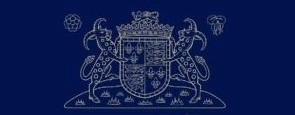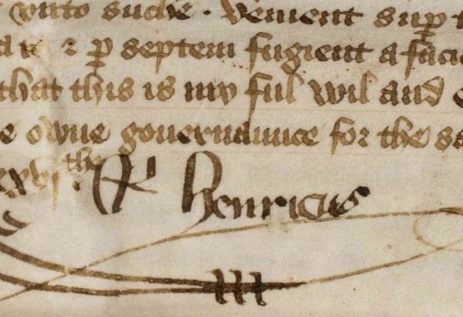
The foundation stone of Eton College was laid by Henry himself, and many of the documents concerning the establishment of the college are signed and initialled in his own hand. Others are written in the first person, and specify that they were ‘signed with my own hand’.
His close personal interest in his project has no parallel in other areas of public business. There are several documents in which Henry VI specifies the exact size, shape, decoration and position of each building, with concerns about flooding taken into account by ordering the creation of a ditch to divert water away from the college. One of these documents, known as his will, gives a detailed description of what Henry envisaged.
Detail of Henry VI’s signature. Royal Patents: The will of Henry VI, 1448.
Eton College Archives, ECR 39/78.
Lower School and the room above it where the scholars lodged – generally two to a bed – were built by 1443. The existing cloisters were also begun c.1442. College Hall, where the scholars and Fellows dined, was near completion by 1448.
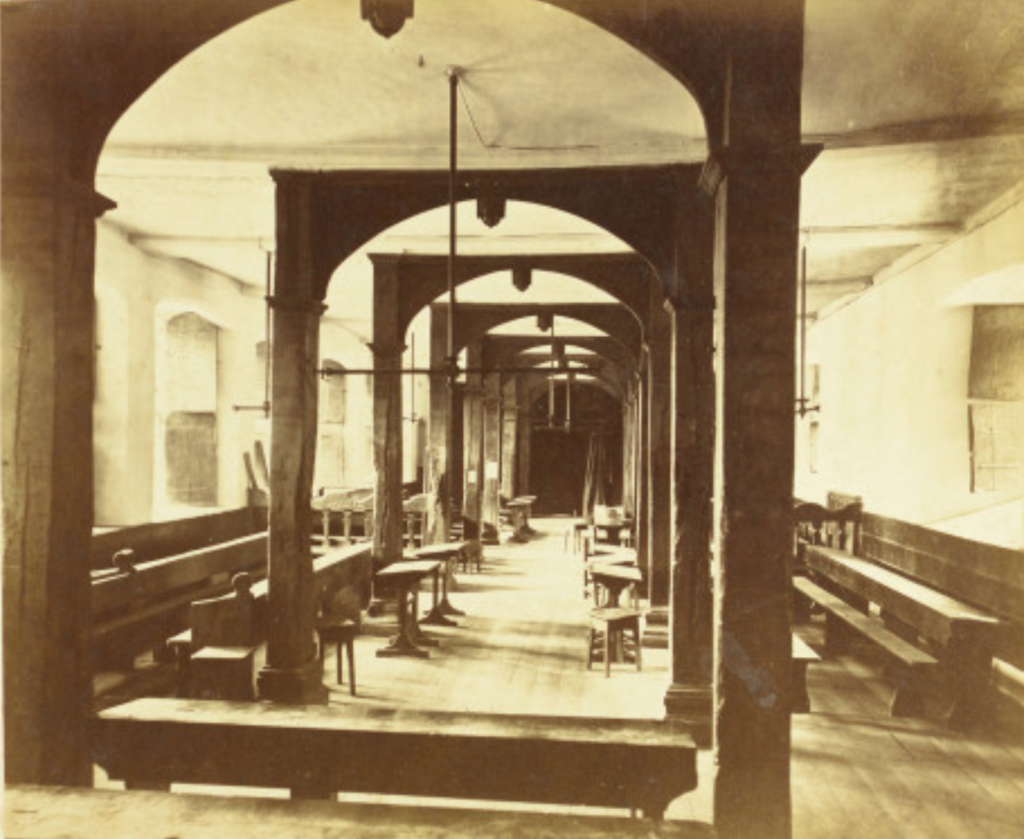
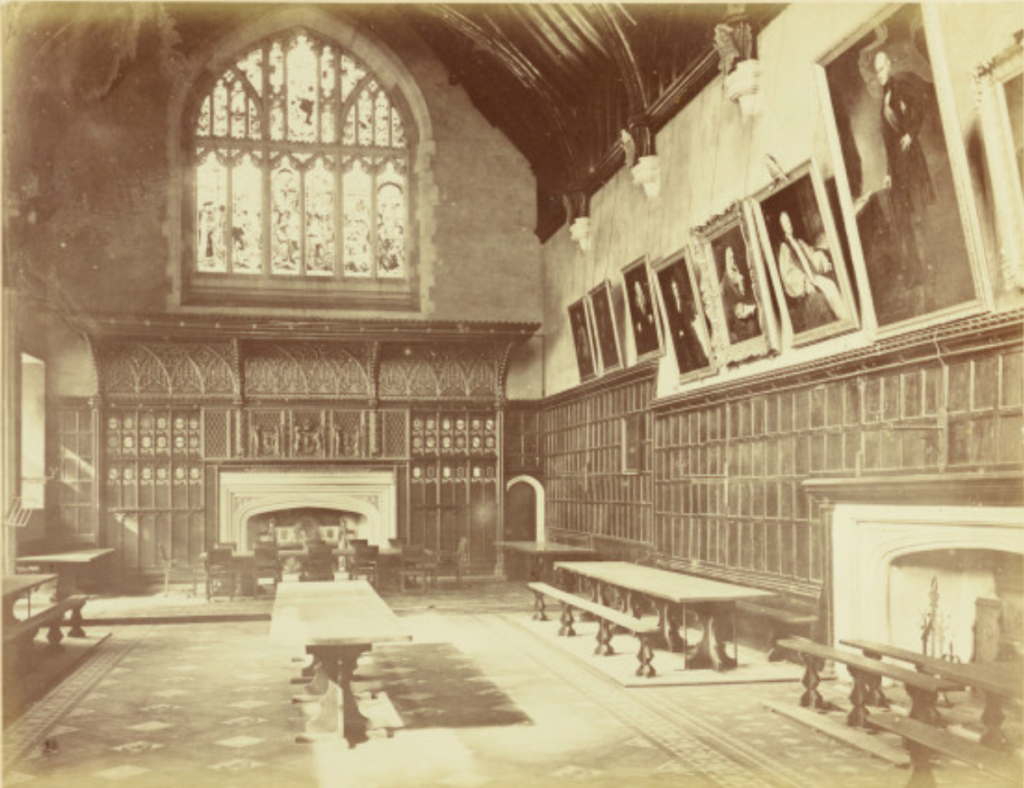
College Hall was not, however, finished according to the original plan. There was a switch from stone to brick and there are other signs of a change to a less expensive design. The Clerk of Work’s journals for this period record not only the cost of materials but also the daily wages of the workmen, along with details of absenteeism and fines for swearing.
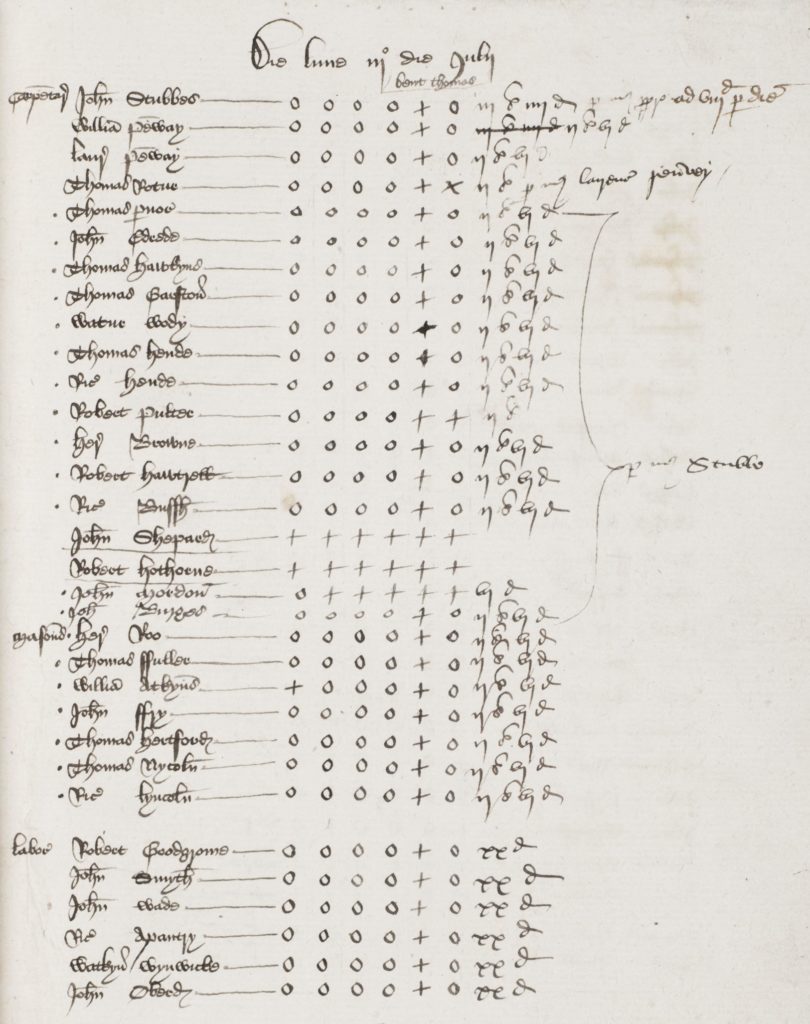
Funding the Works
Henry’s vision would require significant resources. Eton College was endowed with many lands formerly the property of the alien priories, as well as regular payments from lands of the Duchy of Lancaster.
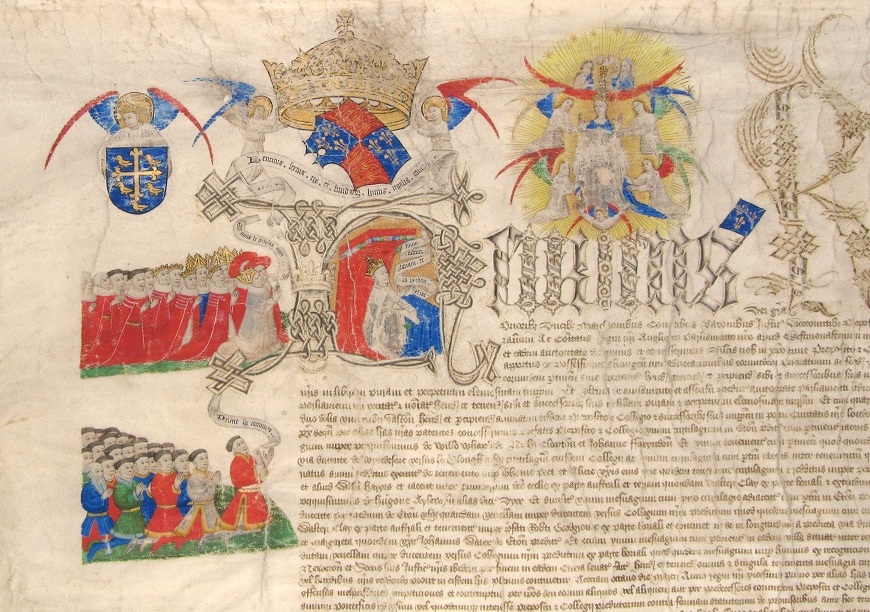
This magnificent document recites the grants made by Henry VI in the first five years of the college. Known as the Consolidation Charter, it contains new grants, and recites and confirms the 19 royal charters previously given. The witnesses consist of the two archbishops, 15 bishops, 14 abbots, one prior, four dukes, two marquesses, seven earls, two viscounts, ten knights, two justices and the chief baron of the Exchequer. There were 60 witnesses in total, since the value of the grants was so high. It was such an important document to the college that the Fellows ensured it was transcribed with great care, and paid £1 6s 8d to William Abell for illuminating it. This illumination is considered amongst the most interesting and beautiful specimens of English art in the 15th century. It depicts Henry VI kneeling within the initial letter H, offering the founding charter of the college, and thus the college itself, to the Virgin Mary, to whom Henry had dedicated Eton. He is surrounded by the political nation – the House of Lords with recognisable members including two cardinals, identifiable by their red hats, and by the House of Commons. This is the first time the two Houses of Parliament were represented in art, and highlights the link between royal power and divine power. It also shows the support of Parliament for the royal wishes as the king’s subjects – they are shown lower than the king.
This immense financial support came at a time the royal purse was struggling due to the enduring wars in France and despite the support suggested in the illumination, was an ongoing source of conflict with the leading members of government. In addition, Henry bestowed privileges such as the right to hold a market or fair, on a scale beyond any known in England at the time
One of the first properties to be granted to Eton was St James’s Hospital for Leprous Women near Westminster.
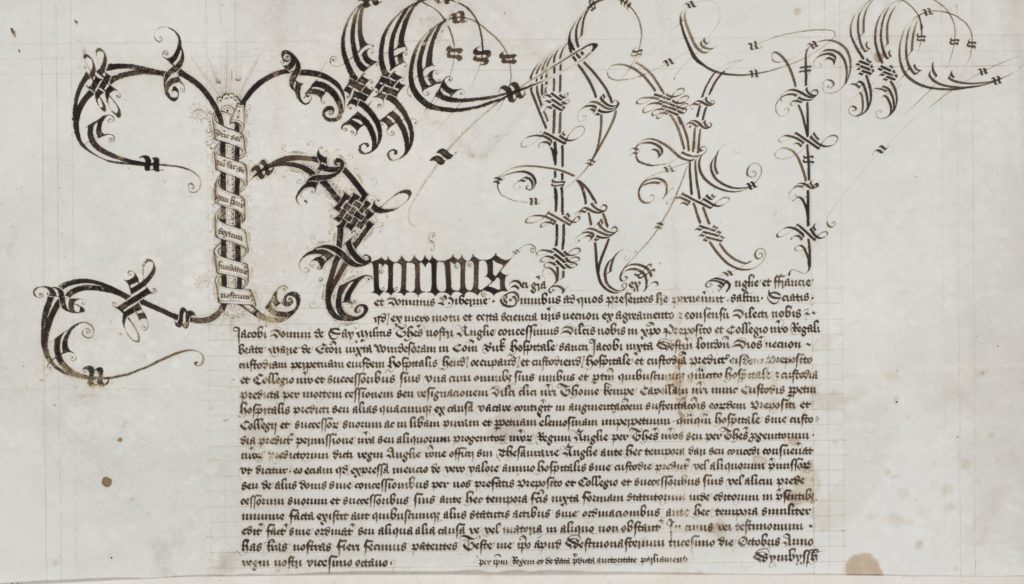
The hospital had been founded in the time of King John, and St James’s Palace was built on its site. In addition to the hospital itself, there were extensive land in what is now Piccadilly, Knightsbridge, Chelsea, Fulham and Hampstead. This was the most valuable gift given to the college by Henry VI. It also provided the Provost with a London base from which he could continue to meet with the king to discuss progress with the college.
Domine salvum fac regem henrius sextum fundator nostrum
Grant of the hospital of St James, Westminster [ECR 39/100]
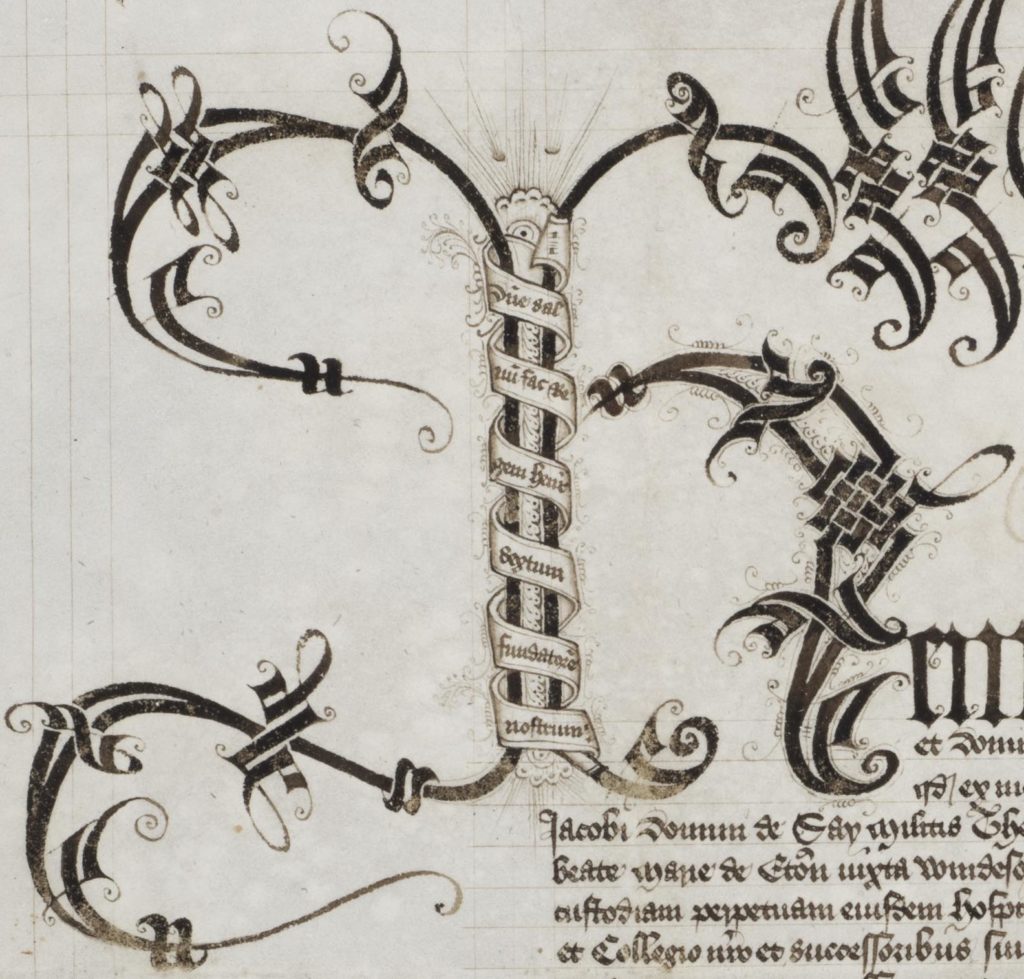
The Latin on this decorative scroll reads, ‘Lord, save the King Henry Sixth, Our Founder’.
Detail of Grant of the hospital of St James, Westminster. Eton College Archives, ECR 39/100.
